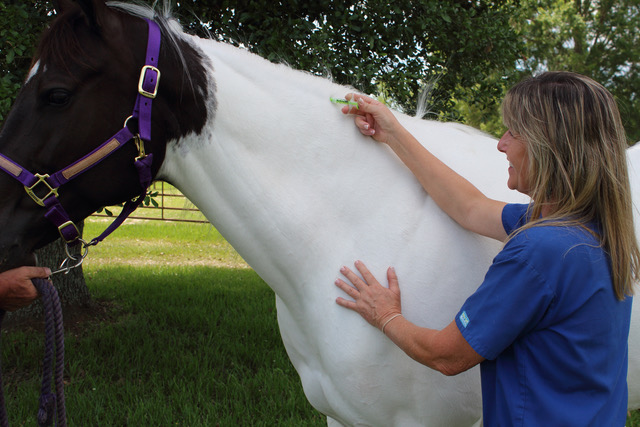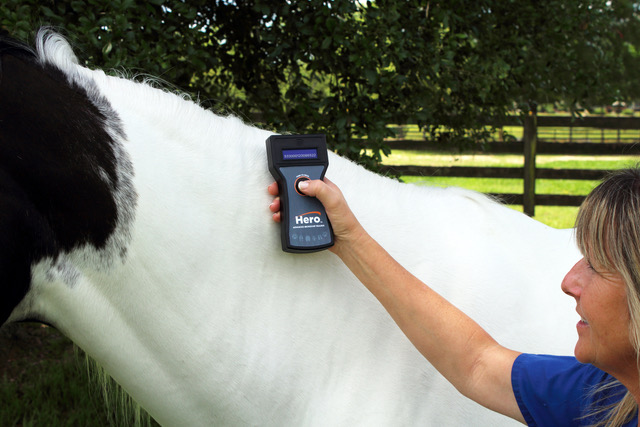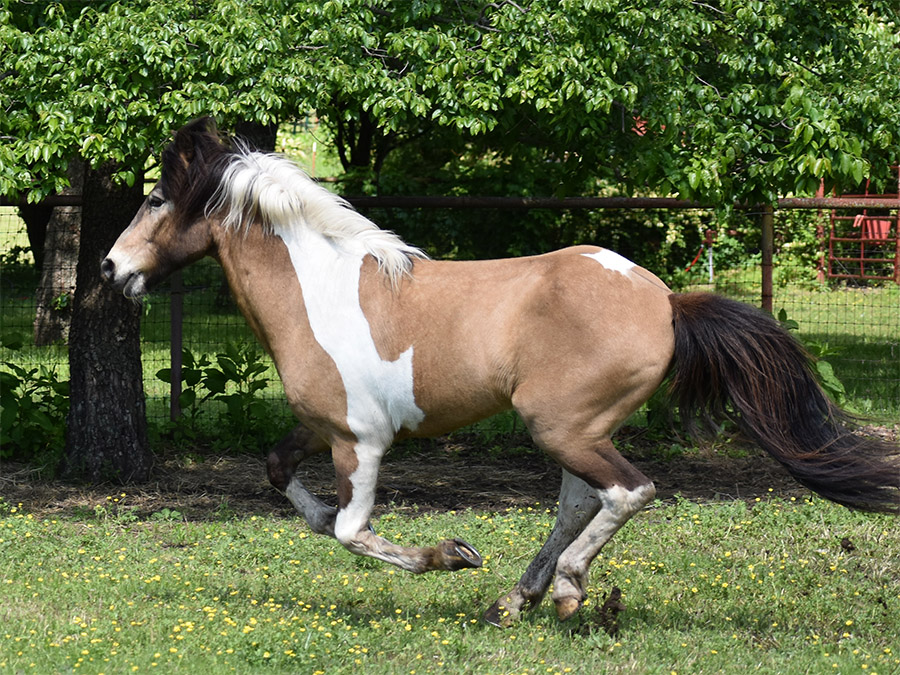For over 20 years, rescue groups, breeders, and pet owners have been microchipping dogs and cats to help ensure lost pets make their way home. Now the horse industry is catching up.
Although a horse is rarely “lost” in the sense that you’d find a runaway clip-clopping down your street, there are other important reasons to microchip our equine pals. Here’s why.
Proof of Identity and Ownership After Natural Disasters
If you evacuate with your horse, you might have to leave him at a racetrack or rodeo grounds. When you return to pick him up, you could be looking at 20 bay geldings. How do you–or the group caring for the horses–figure out which one is yours? A microchip gives you the answer
Tracking Disease Outbreaks
Since 1994, Louisiana has required microchips and Coggins tests for Equine Infectious Anemia (EIA) for all horses. This worked to horse owners’ advantage after Hurricane Katrina in 2005. The Louisiana Veterinary Medical Association Equine Committee partnered with Louisiana State University to recover displaced horses. They gathered trailers and trucks and rescued 500 horses, housed them, and reunited all but one with their owners. Jay Addison, DVM, who was involved with the rescue efforts, says their incredible success was mainly because the horses were microchipped.
The USDA and the Equine Disease Communications Center keep a record of outbreaks and can warn veterinarians and owners of a horse’s potential exposure. If a horse at a sales barn or horse show is diagnosed with a health problem, it can be tracked to its origin and other horses identified who may been exposed as well. In Louisiana, where EIA is common, cases have been drastically reduced due to testing and tracking via microchips.
An Easy Process
A microchip uses RFID (Radio Frequency Identification) technology. Your veterinarian inserts the chip with a needle. The needle is a bit larger than one used for a vaccine, so the horse usually feels it but doesn’t overly react. Anesthesia is not necessary.
Note that a microchip is not a GPS device. The technology is entirely different. A GPS requires a power source, such as a battery. You can’t track your horse’s location with a microchip.
For a horse’s microchip to provide any of the benefits listed here, it must be registered. All registries charge a one-time fee to register a microchip.

Unique and Permanent
Tags fall off; halters get removed; a phone number painted on your horse’s hoof can wear off. A microchip is guaranteed to last for the life of your horse. Think of it as you would a VIN number on your car. It doesn’t migrate because it is implanted in the nuchal ligament below the base of the mane, rather than under the skin as in cats and dogs.
Universal Scanners
Rescue groups, veterinarians, and animal control agencies all have universal scanners that can read any brand of chip. Since 1998, microchip manufacturers worldwide conform to ISO (International Standards Organization) requirements and each chip has a 15-digit number. Today’s scanners can also read older chips made before 1998.

Centralized Registries
All registries will register any brand of chip, but if you don’t know which registry the horse is listed with, you may need to make multiple calls before tracking down the owner. Some centralized registries combine databases of a number of registries. The rescuers enter the number in the database, and it will tell them the chip manufacturer, if there is a registered owner, and which registry to contact. They can then contact the correct one and get the owner’s information.
One such registry is horselookup.org, established by the American Horse Council. Another centralized registry is https://www.aaha.org/petmicrochiplookup, administered by the AAHA (American Animal Hospital Association). Centralized agencies do not have or distribute your personal information. They do not require additional registration or fees.
Becoming a Standard Requirement Worldwide
The European Union has required microchipping of all foals since 2009. The United Kingdom has required microchipping of all horses, ponies and donkeys beginning in 2020. If you import a horse, a microchip will ensure you are receiving the same horse you purchased overseas.
Sporting Events and Breed Registries
A microchip can verify that a competition horse is the one that is actually entered in an event. Since 2017, The USEF (United States Equestrian Federation) and FEI (Fédération Equestre Internationale) have required all horses be microchipped. The Jockey Club requires that all thoroughbreds must be microchipped. Breed organizations for the Oldenburg, Holsteiner, Hanoverian and others also require microchipping. Wild mustangs are now microchipped by the BLM (Bureau of Land Management) before they are placed.
A Mobile Link to Health Records and Other Information
Some scanners now include a Bluetooth module, which allows your veterinarian to scan horses and bring up their files on a nearby laptop or iPad. You can also create your own files with photos and other important information.
A Tool for Rescue Groups and Shelters
A microchip helps rescues keep track of a horse they have placed. The organization can also serve as a backup resource if your horse is lost or stolen. A horse is much more likely to escape during the first few weeks in his new home when he hasn’t settled in and is nervous about his new surroundings. Your neighbors might not know about your horse yet and won’t recognize him as he goes running down the street toward a busy intersection. A microchip might help get him back home to you.
As you can see, there are many good reasons to microchip your horse. Listing the microchip with a registry that partners with others to improve your chances of being reunited with your horse if he gets separated from you.
This article was reviewed/edited by board-certified veterinary behaviorist Dr. Kenneth Martin and/or veterinary technician specialist in behavior Debbie Martin, LVT.








